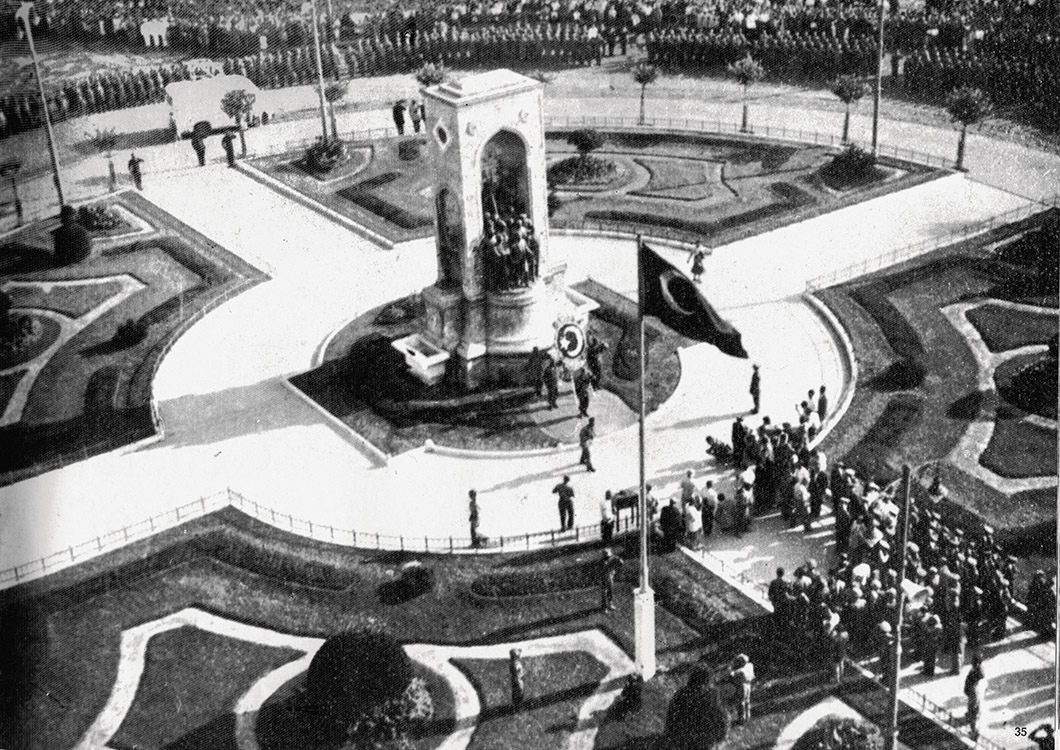- Open Today: 10.00–18.00
- Ticket
- Shop
- Membership
- TR EN

Gülsün Karamustafa, 1946
Memory of a Square (As Seen From Inside), 2005
Gülsün Karamustafa was born in 1946 in Ankara and currently lives and works in Istanbul. Between 1963-1969, she studied in the Department of Painting at the Istanbul State Academy of Fine Arts and graduated from the studio of Bedri Rahmi Eyüboğlu. The artist then worked as an instructor at the Istanbul State School of Applied Fine Arts, although during this period she moved away from the academy’s understanding of art and began to explore different techniques. Later, she resigned from her position at the academy and continued to work independently.
Gülsün Karamustafa concentrates on topics that shape the concept of identity, such as migration, gender, boundaries, and memory. Among the important issues she addresses in her work are the social traumas caused by nation-building and the political events of the 20th century. Karamustafa’s approach and production have been shaped as much by her childhood and youth in Ankara and the events of 1968, which she witnessed during her studies in Istanbul, as by the clashes between right- and left-wing groups, and topics such as racism and feminism that began to be discussed globally in the late 60s and early 70s. Influenced by events that she witnessed personally and her observations of different layers of society, Karamustafa displays a distinctive expressive style, rendering local narratives universal through film, painting, sculpture, and installation.
"Memory of a Square" is a video project which refers to the relationship between the public and the private space. It consists of two screens that run simultaneously: on one we see a family indoors, in the other we see real footage of a main square in Istanbul. The documentaries chart events that happened from the beginning of the 1930s to the end of the 1980s in the square. These events include the opening ceremony of the central “Monument” in 1930 and the tradition of taking family photos on the spot; 6-7 September 1955, a provocative demonstration against Greek, Armenian, Jewish minorities which ended up with many of them leaving the country; 27 May 1960, a military coup which led to the execution of the prime minister and two other ministers; “Bloody Sunday”, a fundamentalist Islamic riot which was used to justify a second military coup in 12 March 1971; the worker’s day celebrations on 1st of May 1977 where more than 30 people were killed, and the third military coup in 12 September 1980. Footage also shows the demolition of two beautiful 100 years old apartments from the Tarlabaşı district in order to open up a grand boulevard between Unkapanı Bridge and Taksim. The films don’t have commentaries and the events taking place on screen are not identified by any verbal means. The only accompaniment is a musical soundtrack that reminds us of silent movies. It is always possible to substitute this documentary footage with footage from countries that lived through similar, repressive political times such as Argentina, Spain, Portugal, Chile or Greece.
Film / Video
Double screen video project
Istanbul Museum of Modern Art Collection
Eczacıbaşı Group donation